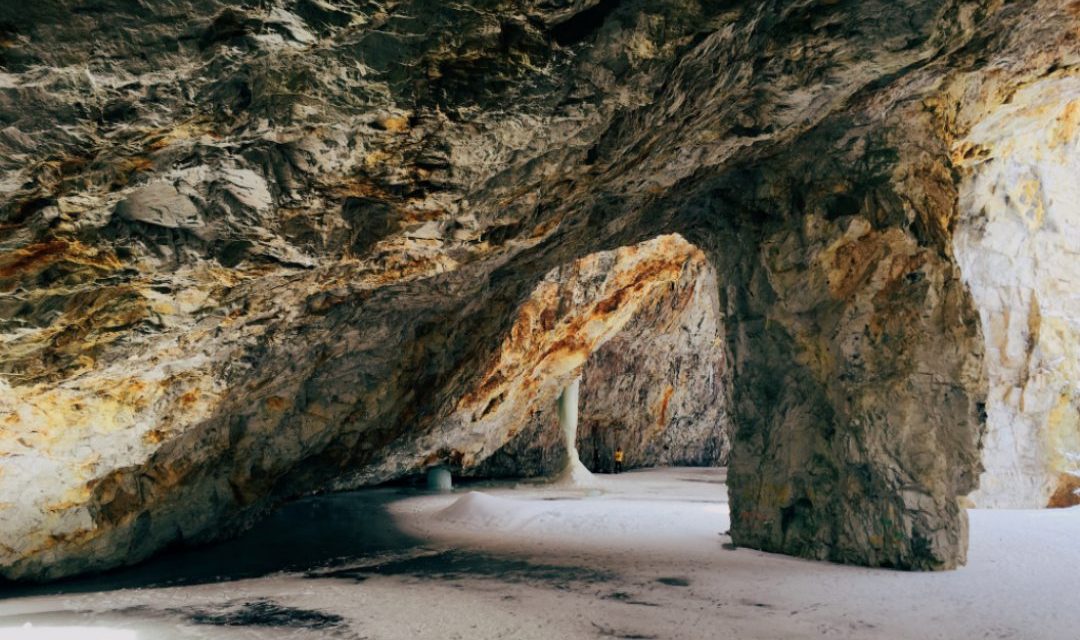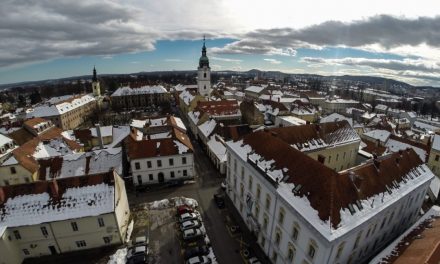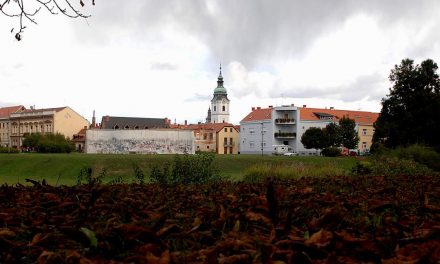A cave system in the middle of the city
The entrance sections of a cave system, Đula’s abyss – Medvedica, known also as the caves Đula, Medvedica and Badanj are located in the middle of town. Ogulin along with Pazin, is the only city in Croatia and among the few in the world that is literally built over cave caverns and passages. The longest cave passage extends below Ogulin’s main Bernardin Frankopan Street.
The longest Croatian caves
The shallow karst of Karlovac County is abounded with caves. Over 500 of them have been discovered. The Đula’s Abyss – Medvedica system in Ogulin (16,396 m) is the second longest cave in Croatia, and the system of Panjko’s Abyss – and Varićak’s cave at Novo Kršlje (12,385 m) is the third longest. The cave in the Tounj quarry (8,487 m) is the fifth, and the system of Jopić’s Cave – Bent near Krnjak (6710 m), is the seventh longest in terms of length.
The cradle of Croatian speleotourism
Karlovac is the cradle of Croatian speleotourism. The Karlovac photographer, Hinko Krapek, was the first to have recorded a cave in Croatia, the small Water Pit (Marble Cave) at Siče in 1888. He arranged the cave and was (along with the Barac Caves near Nove Kršlje in1892) among the first in Croatia to be opened to visitors. It is visited even today, illuminated by flashlights.
A richness of icicles and historical findings
The Jopić Cave in Podgorje near Krnjak is the fifth longest cave in Croatia (6.7 km). Water flows through lowest ’floor’, and after its emersion continues to flow as the Durlić Stream. The higher levels are rich in stalactites and stalagmites. The caves were discovered in 1986 by speleologists from the Dubovac Mountaineering Association from Karlovac. The Jopić Cave is full of findings from prehistory times to the Middle Ages, and is distinguished by the discovery of deformed skull from the 3rd century.
Unique ‘city of the dead’ cave
The Romans in Europe were buried in caves but only in the caves of the Karlovac area; the Bubi’s Pit not far from the village Siča near Barilovići is one of five Roman cave necropolises found in Europe. The cave was discovered by a boy called Tihomir Boljar – Bubi in 1998. During the 3rd century, approximately 50 people were buried in the 104-meter long cave. They were buried in costumes, and accompanied by food, personal items and money. The findings can be seen in the Karlovac town museum.
Caves as defensive fortresses
Croatia has the greatest number of defensive caves in Europe, and half of these 70 or so caves are situated in the County of Karlovac. Most of the fortified caves are located in river gorges, with the most famous being the Vrlovka Cave on the Kupa River and the Gajina Cave above the Korana River. The cave fortifications are wonderful examples of architectural art, and the people in them sought shelter during the Turkish threat, the Second World War II and during the Croatian Homeland War.
The living riddles of the caves in Barilović
The cave in Barilovic near Karlovac hides unusual riddles – white adult catfish. They were first seen in underground lakes during speleological research in the caves in 1957. The cave is located right near the right-hand foreshore opposite the Barilovic Fort and was visited even back in the 19th century. Half of its 295-metre length is accessible to the visitors.
The only freshwater cave sponge
Caves near Ogulin are the habitat of a unique type of Croatian underground fauna, the only freshwater cave sponges in the world. The Croatian stenoendemic specie (endemic to small areas) was discovered in the 1970s in seven caves of the Ogulin Plašćan karst plateau, which possess a constant water flow. The white sponges have a diameter of only few millimetres
Natural tunnel towards the Korana River
The system comprising Matesićs’ Cave and Popovača Cave near Slunj (1,246 m) is a rare example of a cave traverse – a cave with two entrances. The upper cave entrance or Matešić’s Cave is the temporary gap. A stream flows through the main passage, and passes through the Popovačka Cave opening into the gorge and then into the Korana River. It was the first explored cave in Croatia (1973) using diving suits. A tour of the cave, under the guidance of a speleologist is an ultimate adventure.
The opulence of decorations
Vrlovka in Kamanje near Ozalj is among the most beautiful decorated caves for tourists in northern Croatian. On occasion of its opening in 1928, a stairway was carved into the gorge rocks because the cave could only be approached by boat. The cave can be toured across a section of 330 meters, through which a stream flows, forming ponds. In 1962, it was declared a protected natural geomorphologic monument.
The first Croatian speleological club
The first Croatian speleological club was opened close to Barać’s Caves near Rakovica in 2004. Upper Barać’s Cave was then renovated for visits. A 200-metre long section can be visited which has been declared a natural geomorphologic monument. The area around Barać’s Caves was declared an important landscape.






